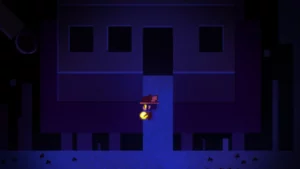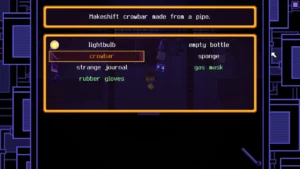For this Critical Play, I played Oneshot, an indie puzzle adventure game. The game follows Niko, who wakes up in a strange lightless world on a quest to bring the sun back to the world and go home. The game is primarily object puzzle driven – most of the gameplay is walking around, finding objects, and using them to unlock new areas or solve a narrative problem. Some are simple object puzzles, and others are unusual-uses-of-object puzzles. For example, to bring power back to the barrens, there are several steps of object combinations and manipulations you must do to create a battery that can be placed in the power port. The objects can be combined with one another and be used on things in the environment to affect the game. There are also some very cool 4th-wall breaking puzzles, where the game instructs you to look in game files to find the next clue for a puzzle.

A particular mechanic of these puzzles that I enjoyed was the ability to combine objects – in most object puzzle games I’ve played, it’s mostly about using objects to interact with the environment, but some of the primary puzzle-solving in this game is about combining the right items. This fits in with the narrative feel and the world the game has built – a very robot heavy, sort of mechanical world is a great backdrop for puzzles that involve fixing/constructing objects by combining them.

Another mechanic of the puzzles I noticed was a lack of hints – this was somewhat frustrating at times, but I do feel it fits within the narrative of the game. The main character doesn’t know much since they’ve been dropped in a new world, and in the first stage of the game, most characters are robots, who by design are not capable of critical thinking beyond their programming (a seemingly key plot point). While this does add to the feeling of mystery and wonder about the game, it also makes it a little frustrating when the solutions to the object puzzles become increasingly non-obvious. As we talked about in class, hints can be critical, and a hint mechanic, perhaps not narratively integrated, would have been a nice addition to the game to prevent players from getting stuck as I did several times.
One final main mechanic of the puzzles that stood out to me was the trend of constant interaction and exploration of the world – the “puzzle” part of the game genre fit in perfectly with the “adventure” aspect, since many of the puzzles are solved by just trying to use objects on things in the environment and seeing what happens. Some puzzles also encourage exploration to various parts of the map to find all the pieces needed to solve the puzzle, thus encouraging the player to be more exploratory and engage with all parts of the map.


